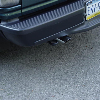local7teener
Well-Known Member
- Joined
- April 11, 2007
- Messages
- 135
- Reaction score
- 1
- City, State
- Chesterfield, MI
- Year, Model & Trim Level
- 98 mountaineer v8
So the new 5.0 is in, all hooked up (Bought a rebuilt short block, .040 over). I pretty much replaced everything. New e cam, cast heads, wires, plugs, lifters, timing set, etc..
It will turn over and start for about a second or two, then die. I can get to run a little longer but you have to pump the hell out of the pedal, and it backfires, but not like a full out backfire, more of a pop.
Heres what i've tried, and hopefully ruled out.
I was pretty thurough with setting the lifter preload, making sure i left no loose ends with wire harnesses, everything.
It seems to me like a timing issue, the backfire being fuel in the cylinder that is not on the power stroke (wasted spark system) I'm out of ideas.. I consider myself pretty mechanically inclined, and I just can't seem to figure out what i'm missing.
It will turn over and start for about a second or two, then die. I can get to run a little longer but you have to pump the hell out of the pedal, and it backfires, but not like a full out backfire, more of a pop.
Heres what i've tried, and hopefully ruled out.
- Checked and rechecked the CPS with the tool and cyl. 1 location (tdc)
- Checked all harnesses and all sensors
- Checked for fuel at the rails
- Making good oil pressure even when cranking over (40psi)
- All vac lines are hooked up.
I was pretty thurough with setting the lifter preload, making sure i left no loose ends with wire harnesses, everything.
It seems to me like a timing issue, the backfire being fuel in the cylinder that is not on the power stroke (wasted spark system) I'm out of ideas.. I consider myself pretty mechanically inclined, and I just can't seem to figure out what i'm missing.










